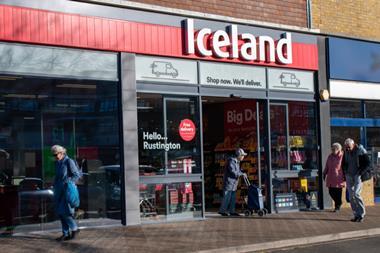Publicis Media chief commerce officer Steve Ricketts looks at opportunities and challenges for retail media networks in attracting bigger shares of advertising budgets
The retail media landscape offers plenty of opportunity – industry body IAB figures project UK retail media ad spend to reach £7.3bn by 2028, but the industry has challenges to overcome.
The trough of fragmentation
As more retailers enter the marketplace, offering an increasing number of formats, it’s harder for advertisers to buy ad space efficiently. Even buying on a single retailer, it’s sometimes impossible to look at the inter-relationship between a display and a search ad.
The industry needs to make it easy for the buy-side of brands and agencies. This requires a degree of interoperability between retail media networks and retailers that many of them may feel uncomfortable with. But when Deloitte and Mintel data indicate that the average UK consumer is currently enrolled in 14.3 loyalty programmes and shops in four different supermarket chains per year, it is essential.
“Even buying on a single retailer, it’s sometimes impossible to look at the inter-relationship between a display and a search ad.”
Fragmentation also occurs when measuring performance across different retail media networks. When retailers define fundamental metrics, such as sales, differently, it’s not a simple comparison.
This is something retailers need to address in order for there to be a systemic change. We welcome the work by IAB and ISBA, but this won’t be solved overnight. We created a scientific-based process to ‘normalise’ the figures from different retailers to create a level playing field for measurement and better decision-making to deal with this.
Shopper insights are essential, but not always available from retailers
Advertisers need insights. Every campaign should start with shopper insights so that the advertiser can match these against their objectives and KPIs, and work out where best to spend their budget.
If retail media networks offer insights on their customers, the advertising budgets will follow. But here too, we see a lack of consistency. Amazon makes data and insights widely available, and it is no coincidence that advertiser investment grows as a result.
“Every campaign should start with shopper insights so that the advertiser can match these against their objectives and KPIs, and work out where best to spend their budget”
There are retailers and networks that don’t make these essential planning insights easily available, and as a result don’t get the same sort of traction. Brands will naturally gravitate towards the more mature networks that offer levers to pull and more headroom for growth.
The opportunity for retail media networks to show their value to advertisers is huge, and those that can deliver these insights will win out. For example, we are working with a number of retailers in a partnership to unlock greater insights for our clients to help with their planning activity and adding more data to our tools.
Getting the basics right
From the media perspective, retail media activity can’t be seen in isolation. There needs to be consistency of messaging and creative across what brands are doing in retail media and what they’re doing on TV, social, out of home, and the retail media networks need to facilitate this.
From the retail perspective, brands need to get the ‘brilliant basics’ right, making sure that the products they are promoting are in stock, and that they have great imagery, brand messaging and customer reviews to promote them. Not only is this common sense – it also feeds the algorithms. If you have poor content and no one’s clicking through and buying your brand, you’re going to start losing more bids than you win, and your ads won’t appear.
“There needs to be consistency of messaging and creative across what brands are doing in retail media and what they’re doing on TV, social, out of home”
We know that if you go out of stock on Amazon, it will impact your organic rank for six to seven days, which can have a significant impact on sales performance. Similarly, when content is optimised to deliver benefit to both the user and the algorithm, we see conversion rate uplifts of up to 21%, and a knock-on benefit to paid media efficiency, with reductions in the cost-per-click of up to 42%.
There are some systemic challenges facing retail media networks, but given the size of the opportunity, we will look back and say ’remember when retail media was only worth £4bn’.































No comments yet